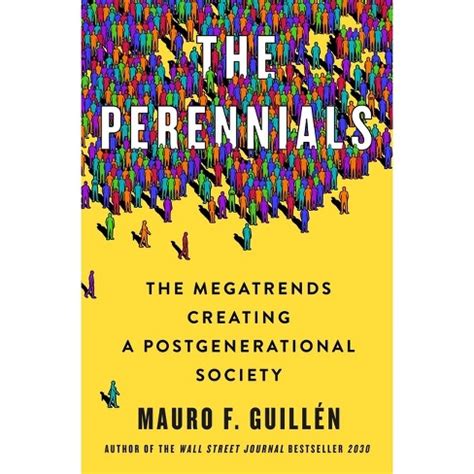Generation All: Models for Tomorrow
Mauro F. Guillen tosses of ideas like a glitter gun, shiny an in many directions. A professor, scholar, theorist and public intellectual, his most recent book is The Perennials: The Megatrends Creating a Postgenerational Society. It is chock full of observations, data, theories and provocative asides. Pitched at the level of a business executive or perhaps an aspiring entrepreneur, the book is both easy to read and difficult to digest.
Guillen’s key argument weaves together demographics, deep shifts in work, technological shifts and policy. First, he explores how people society are living longer and are enjoying healthful life longer. That shifts the way that we think about work, retirement, and many life choices. He notes that there are changes in when women decide to start a family, what sort of family structure is sought, and the growth of intergenerational households. The nuclear family is a relatively recent innovation. Add to that mix the desire of more and more people to finds to ways to balance work, family, and pleasure. These all add up to broad societal shifts, Guillen stresses. He believes that the ways in which we think of generations (Boomers, Millennials, and so on), as well as their priorities and values, are becoming obsolete.
Interesting, isn’t it?
While the broad argument Guillen posits is very general, there is much to recommend in the “megatrends” he examines. For instance, he makes a strong claim for abandoning the “four stages of life” theory. That is play, study, work, and retire. It simply does not hold true for many people. However, much of our societal structure and expectations is grounded in this concept. Educational, housing, health and retirement policies immediately come to mind. Guillen shares data which indicates that the nuclear family ideal has peaked. As for how people make money, net job growth does not align with expected mindsets, either. The fastest demographic finding employment is now for those over the age of 60. Guillen looks closely at the many shifts in the lives of women, from career trajectories to different models of family.
The Perennials is built on a consistent structure. Guillen makes a provocative big picture observation and explores the concept, mixing research and good quotes and examples. The stories stick. However, one cannot help but wonder about the many factors and complications mixed through each big idea. Is the “megatrend” sustainable? For all or for some?
Education figures prominently in the book. Guillen sees many opportunities for higher education to provide new and different types of learning opportunities. One major shift he explores are means that might match older potential students with new jobs and careers. He rightly observes that demographic changes call for new models that many institutions of higher education have not created. Guillen is correct, too, in observing that mindsets, policies, practices and even laws limit new thinking about multigenerational thinking. Everything from funding models to course and program structures have roots in generational assumptions.
Spinning this out, The Perennials is the sort of book that leads to questions and imagined future. It also makes you wonder what Guillen would be like in the classroom, at the seminar table, or at a party. I would wager that he would be memorable, the kind that would inspire challenging ideas. Smart, eloquent, and with a striking ability to weave data points into potential big-picture ideas, Guillen’s The Perennials is a welcome and creative read.
David Potash
